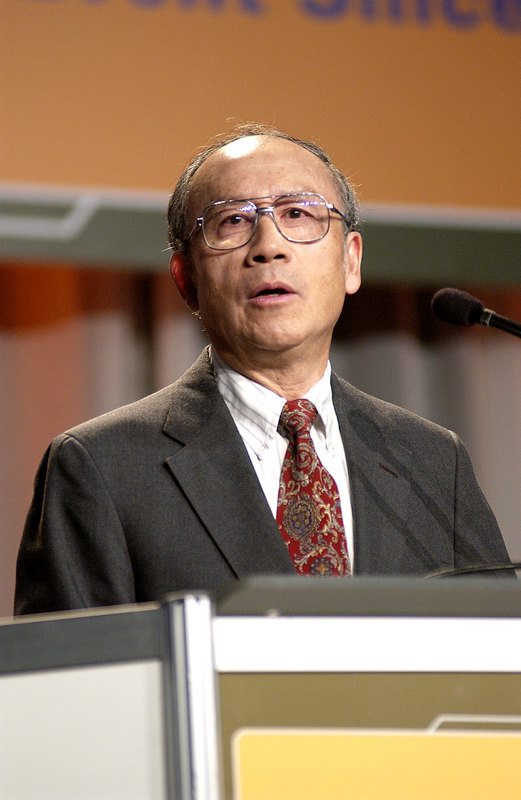Tingye Li
Tingye Li

Tingye Li was born in 1931 in Nanjing, Jiangsu Province. He earned a bachelor’s degree from the University of Witwatersrand, Johannesburg, South Africa and his Ph. D. from Northwestern University, Evanston, Illinois. Shortly after graduation in 1957, Li joined Bell Telephone Laboratories (later AT&T Bell Laboratories), and worked there for 41 years until his retirement in 1998.
During his career at AT&T, Dr. Li authored and co-authored more than 100 journal papers, patents, and books in the areas of antennas, microwave propagation, lasers, and optical communications. He made significant contributions in the fields of lightwave technologies and systems, and he spearheaded research on wavelength division multiplexing transmission systems that revolutionized long-distance telecommunication networks.
In 1961, he and his colleague A. Gardner Fox published a now-classic paper on laser resonator modes, Resonant modes in a maser interferometer, that established the basis for the understanding of the design of optical resonators and how modes in optical resonators behaved. In the late 1980s, when the whole world’s attention on optical communication was still focused on a single-channel high speed solution, Li and his team at AT&T Bell Labs developed the world’s first (sparse channel) WDM (Wavelength Division Multiplexing) system. Their experiment in 1992 at Roaring Creek turned out to be a "roaring success" as Li claimed in an interview, allowing 2.5 Gbit/s transmission per channel, the highest rate available at the time. The use of WDM and optical amplifiers changed the paradigm of network economics and is considered to be of revolutionary significance (though evolutionary in design) in the history of lightwave communications.
An OSA member since 1966, Li was named an OSA Fellow in 1977. He served as an At-Large member of the OSA Board of Directors from 1985-1987, as OSA President in 1995, chaired numerous committees, and was a leader in building the Asia Communications and Photonics (ACP) conference.
Li received many awards and honors during his long and distinguished career. He was a Fellow of OSA, IEEE, AAAS, the Photonic Society of Chinese-Americans, and the International Engineering Consortium. He was also a member of the U.S. National Academy of Engineering, the Academia Sinica (Taiwan), and a Foreign Member of the Chinese Academy of Engineering.
Li was the recipient of OSA’s John Tyndall Award (1995) and OSA's Frederic Ives Medal/Jarus W. Quinn Prize (1997); IEEE’s W.R.G. Baker Prize (1975), David Sarnoff Award (1979), Photonics Award (2004), and Edison Medal (2009); and the 1997 AT&T Science and Technology Medal. He was given the 1981 Alumni Merit Award from Northwestern University, and he received Achievement Awards from the Chinese Institute of Engineers/USA (1978), the Chinese-American Academic and Professional Society (1983), and the Photonics Society of Chinese-Americans (1998). Li was named an honorary professor at many universities in China, including Tsinghua University, Shanghai Jiaotong University, Beijing University of Posts and Telecommunications, Beijing Jiaotong University, Fudan University, Nankai University, Tianjin University, the University of Electronic Science and Technology of China, and Qufu Normal University. He was also named an honorary professor at National Chiao Tung University and National Taiwan University, and he was granted an honorary Doctor of Engineering degree by National Chiao Tung University in Taiwan.
Li was a pioneer in lightwave system research and was credited with revolutionizing lightwave communications by advocating and leading the research on amplified wavelength-division-multiplexed transmission systems at AT&T. He retired from AT&T in 1998, as a division manager in the Communications Infrastructure Research Laboratory, and then worked as an independent consultant in lightwave technologies and systems.
Tingye Li died on 27 December 2012, please see Optica's memorial entry.
Multimedia
Document Created: 26 Jul 2023
Last Updated: 28 Aug 2023
